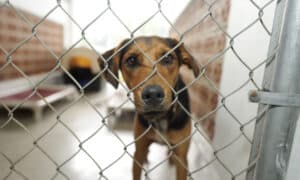“This post contains affiliate links, and I will be compensated if you make a purchase after clicking on my links.”
It sounds weird to think that we as owners need to be weight watchers for our dogs. But the truth is, your dog’s weight has a dramatic impact on their wellbeing. Not only are they more susceptible to diseases when underweight or overweight. They are also less able to live fully energized, happy lives.
So, in this article, we’ll share with you the dangers of weight issues in dogs and how you can help your dog maintain a healthy weight.
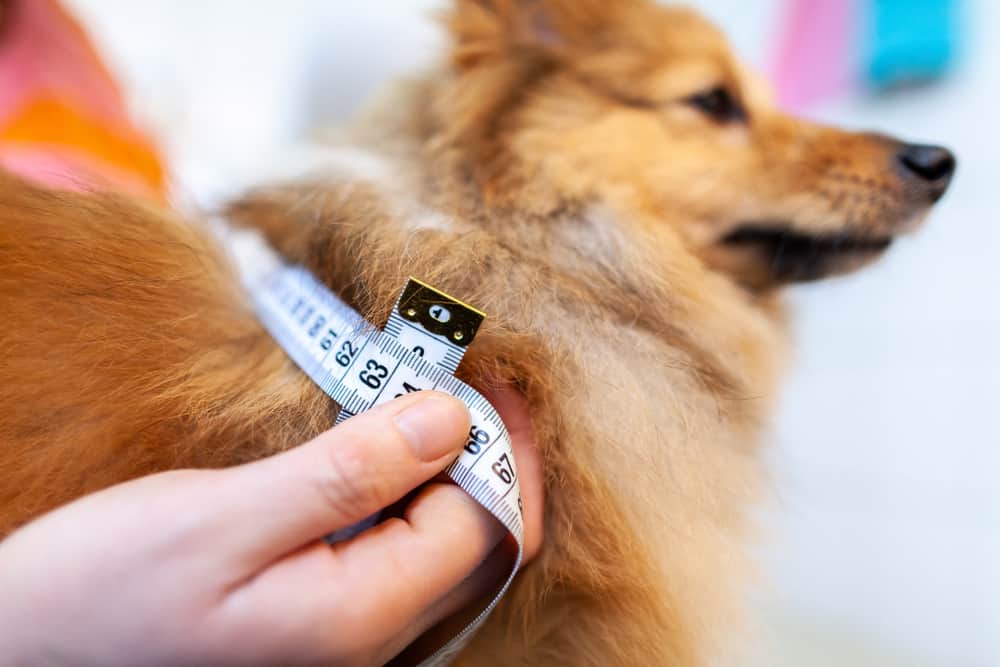
Why Your Dog’s Weight Matters
As we alluded to in the intro, weight matters. Dog owners rarely prioritize weight as a primary indicator of health, because we are laxer about it in the human world. A larger person does not necessarily mean they are unhealthy and vice versa.
However, in the canine world, unhealthy weight gain or weight loss is a huge red flag that something is out of balance. It can lead to devastating effects.
Obesity in dogs could result in:
- High blood pressure
- Diabetes
- Bladder and kidney stones
- Early-onset osteoarthritis
- Increased risk of heart disease
- Increased risk of all kinds of cancer
Underweight issues in dogs could result in:
- A stressed and weak immune system
- Muscle loss
- Feeling the cold more results in shivering
- Skin issues
- Weakened skeletal system
- Hormonal conditions
- Lethargy and reduced mobility
How To Tell If Your Dog Is Underweight or Overweight
So those are the reasons dog weight matters. How can we tell that our dogs are at a healthy weight without measuring them obsessively?
The first thing to note is that every dog breed is different. There are general guidelines that your vet can help you understand for your dog’s age, breed and sex.
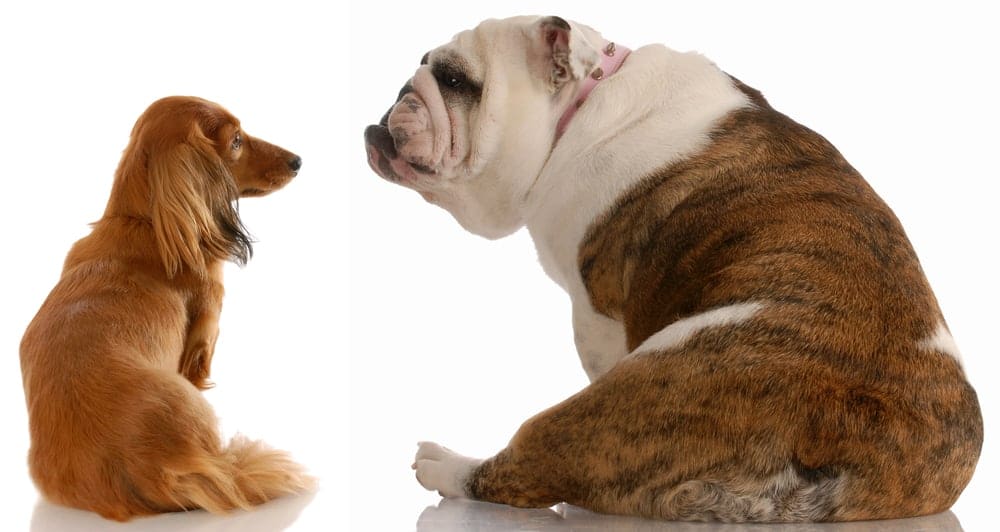
That said, unless you have one of those industrial pet-sized weight machines that vets do, it would be quite challenging to weigh your dog regularly.
Luckily for us, there’s a way of eyeballing it. A visual and touch-based measurement of general health. It is a 9-point scale called BCS or Body Condition Scores.
Below is a brief summary of how it works.
9-point Body Condition Scores
1/9 Emaciated
- Ribs, backbone and pelvic bones are very visible, poking through the skin
- Skin is delicate and thin
- Loss of muscle mass.
- Waistline is very defined with a severe tummy tuck.
2/9 Very Thin
- Ribs, backbone and pelvic bones are visible
- Loss of muscle mass.
- Waistline is very defined with a severe tummy tuck.
3/9 Thin
- Ribs, backbone and pelvic bones are easy to feel and slightly visible
- Loss of muscle mass less severe
- Waistline is very defined with a severe tummy tuck.
4/9 Underweight
- Ribs, backbone and pelvic bones are easy to feel but not visible
- Waistline is defined with a tummy tuck.
5/9 Ideal weight
- Ribs, backbone and pelvic bones are easy to feel under a layer of thin fat.
- Adequate muscle mass.
- Waistline and tummy tuck are visible but not severe
6/9 Overweight
- Ribs, backbone and pelvic bones can be felt under a thick layer of fat
- Waistline is more gradual
- Tummy tuck is more slight
7/9 Heavy
- Ribs, backbone and pelvic bones can be felt under a heavy layer of fat. Pressure is needed to feel this.
- Waistline isn’t visible
- Tummy tuck is hard to see
8/9 Obese
- Ribs, backbone and pelvic bones can be felt under a heavy layer of fat. Pressure is needed to feel this.
- Waistline isn’t visible
- Tummy tuck isn’t visible
9/9 Severely Obese
- Ribs, backbone and pelvic bones can’t be felt. They are enveloped in fat.
- Waistline protrude outward
- Tummy tuck rounds downward
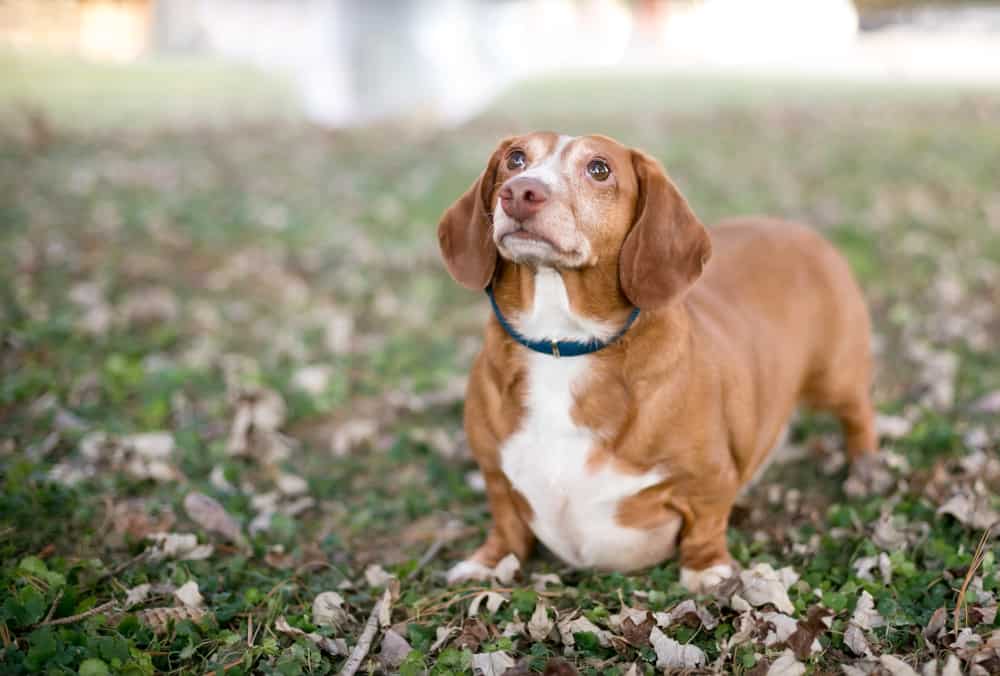
How To Maintain Your Dog’s Weight: 5 Tips
Fortunately, it’s not difficult to keep our dogs at a healthy weight. Given that we have an easy way to identify if our dog’s weight is getting out of control, we can course-correct very quickly. Here’s how.
1. Understand how many calories your dog needs
Yep, calorie counting isn’t the most fun Sunday activity. But it can help regulate your dog’s diet. As a shorthand, you should feed your dog one-third of a cup of dry food per day per 5 kilos of weight. You can also find ideal calorie intake charts for your dog’s specific breed online.
But of course, please do get a personalized recommendation for your dog from your vet.
2. Get your dog checked
Our dog should get a routine check-up from your vet at least once per year. If you notice any dramatic differences in your dog’s weight, you should consult your vet for advice. Weight gain or loss could be symptomatic of underlying issues which we’ll come back to.
3. Invest in healthy dog treats
When calculating calorie intake, we often forget about treats. Unhealthy treats or human food can carry high calories. They can also be more fatty or high in sodium. That’s why it’s worth investigating available healthy treats to give your dog.
4. Make sure your dog is getting enough exercise
…but not too much! Exercise is a balance. If you over-exercise your dog, you could cause weight loss and muscle strain. Not exercising them enough could lead to dog obesity. Find a rhythm that works for your dog’s activity level and your weekly schedule.
Bear in mind that the general guidelines are to walk your dog once per day for at least 20 minutes. Some energetic breeds will need more activity than that to be happy and healthy.
5. Address any underlying health issues
Finally, underlying health issues can really affect your dog’s weight. If you are aware of any thyroid problems, consult your vet on any medication that can support your dog. There also may be specialized food diets that your dog needs to maintain a healthy weight if things are naturally out of balance.
We hope this guide has helped you identify if your dog may have a weight problem and how to fix it. Our parting words are to remember balance over perfection. It’s never too late to reset your dog’s eating and exercise habits for a healthier happier life.
Found this article helpful? Pin it!
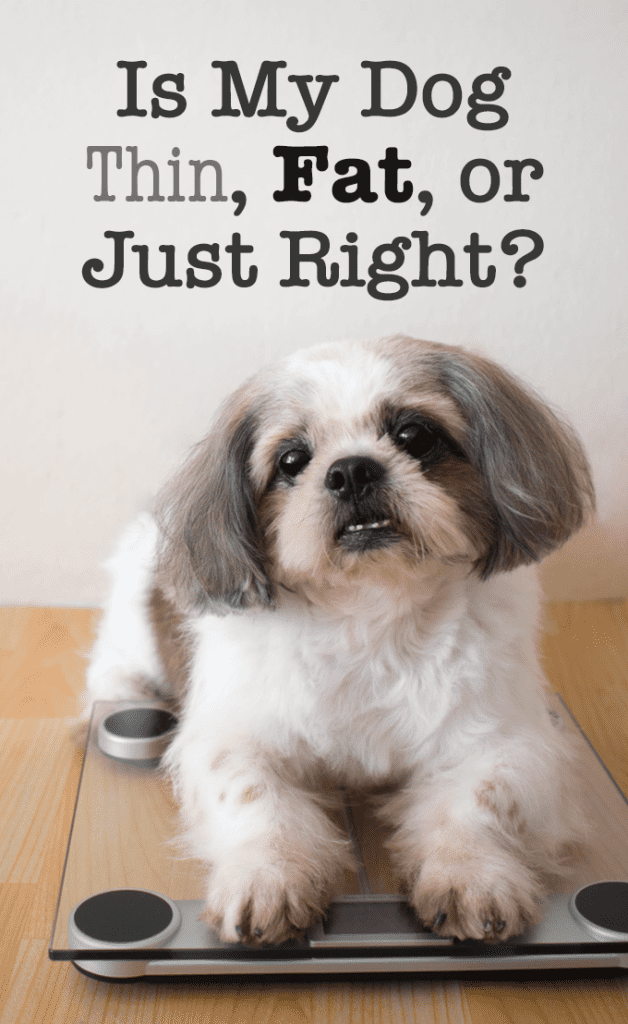
So, in this article, we’ll share with you the dangers of weight issues in dogs and how you can help your dog maintain a healthy weight.

